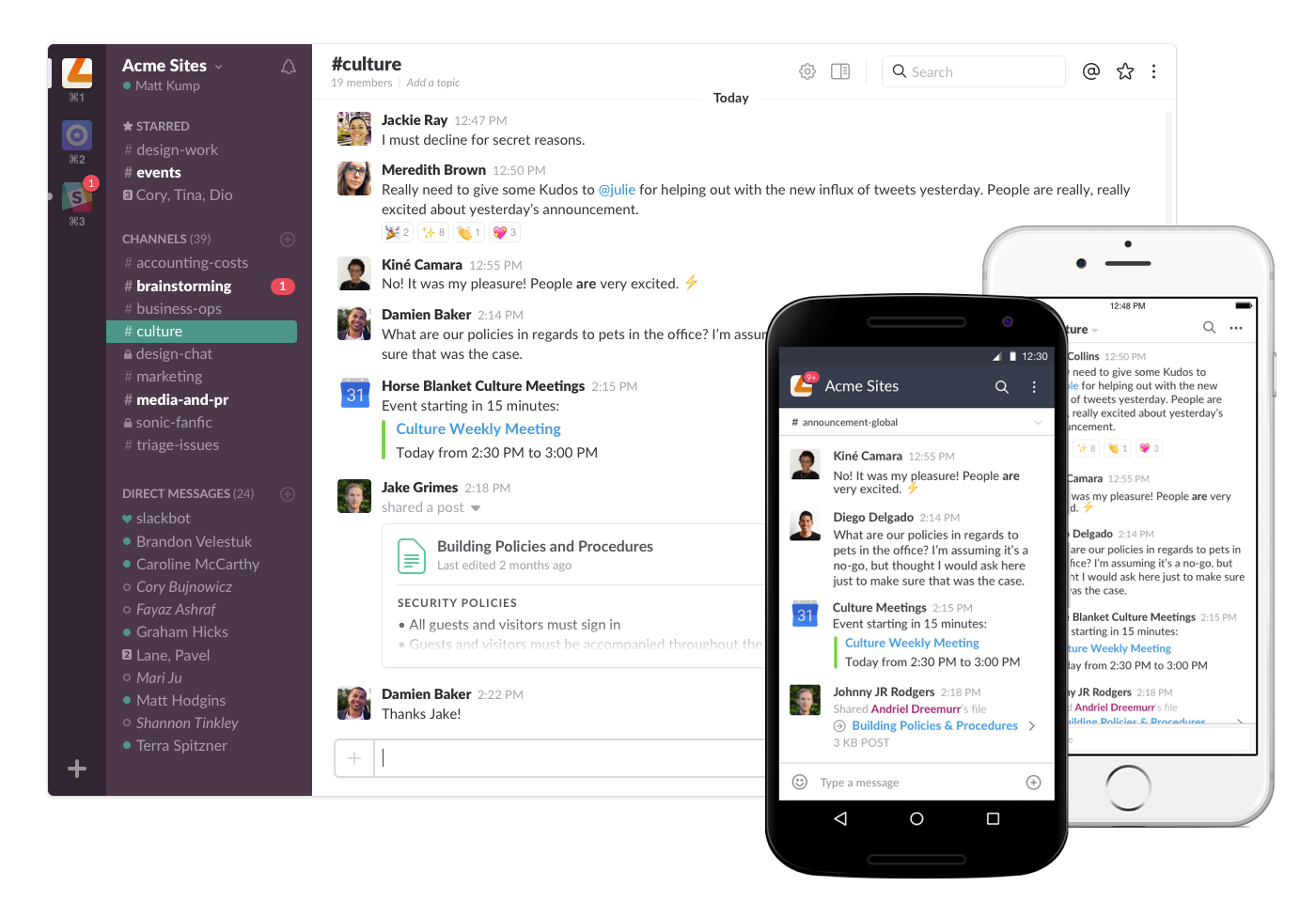A comprehensive guide to team collaboration in 2021
Collaboration in the workplace has taken on a new importance for business leaders and employees alike. Gone are the days of a 9-5 workday and a clock-in, clock-out mentality. Even before COVID-19 emptied office buildings, a shift in the business world has been underway for quite some time. Productivity, efficiency, and workplace satisfaction have become key building blocks to the most successful organizations. These are all elements of effective team collaboration.

See how an intranet works
Learn how an intranet works with this short video.
In this article we will cover the following topics:
What is collaboration?What does effective collaboration look like?
Why is collaboration important?
Why collaboration fails
Benefits of collaboration in the workplace
How does online collaboration work?
How business collaboration is evolving after COVID-19?
Evaluate collaboration in your team
Collaboration ideas to implement yourself
Examples of collaboration tools
A recent study predicts that the enterprise collaboration market will hit $45 billion by 2025 with 60% of respondents indicating that investment in their digital workplace has helped them be more agile and responsive in the current environment. Looking beyond the pandemic, business leaders are realizing that effective workplace collaboration can be the key that unlocks their team's potential.
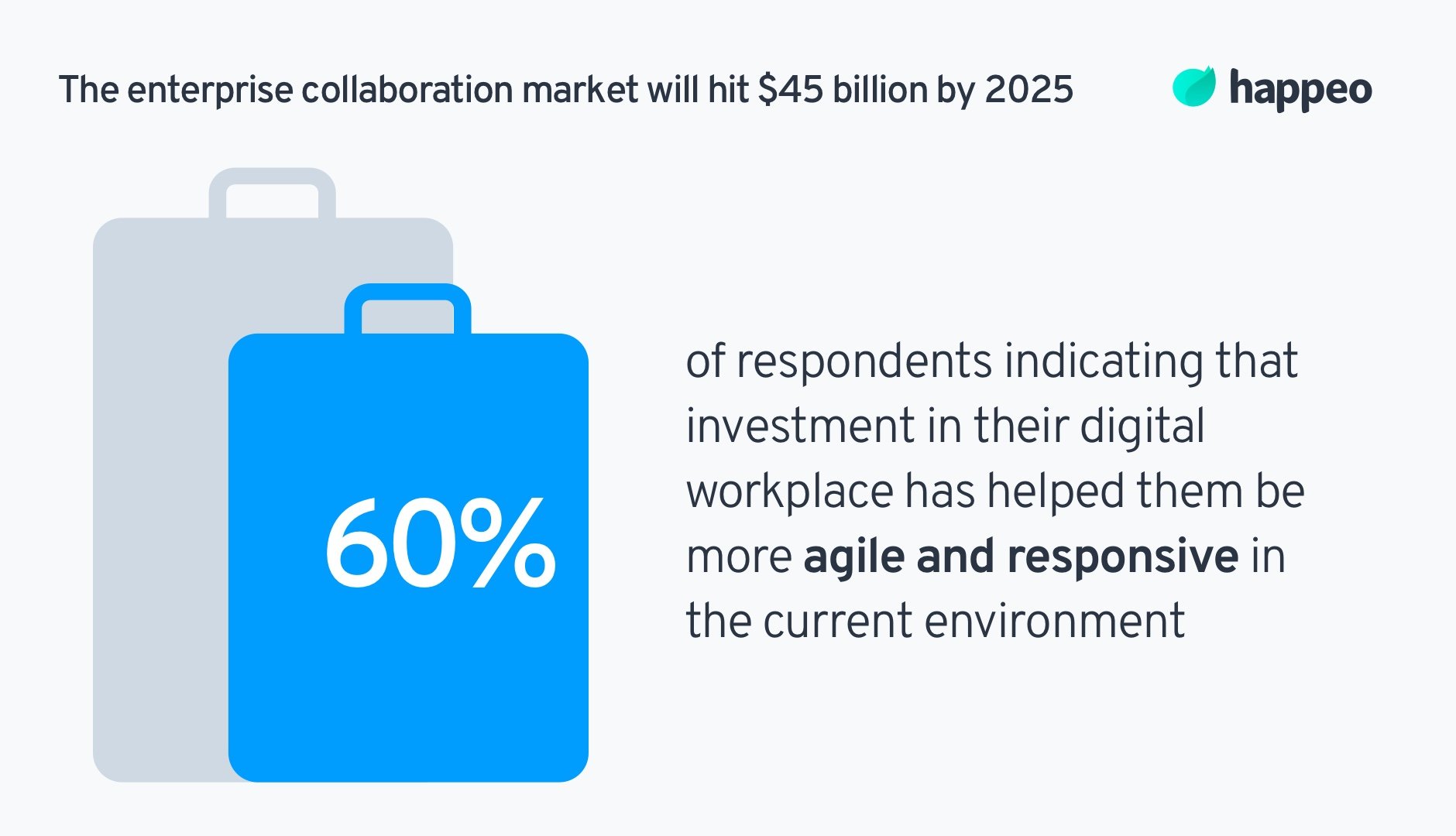
- Promoting effective team building and collaboration was found to be the highest-ranked aspect of a great workplace by 43%. The next ranked aspect is health and well-being support at 36%.
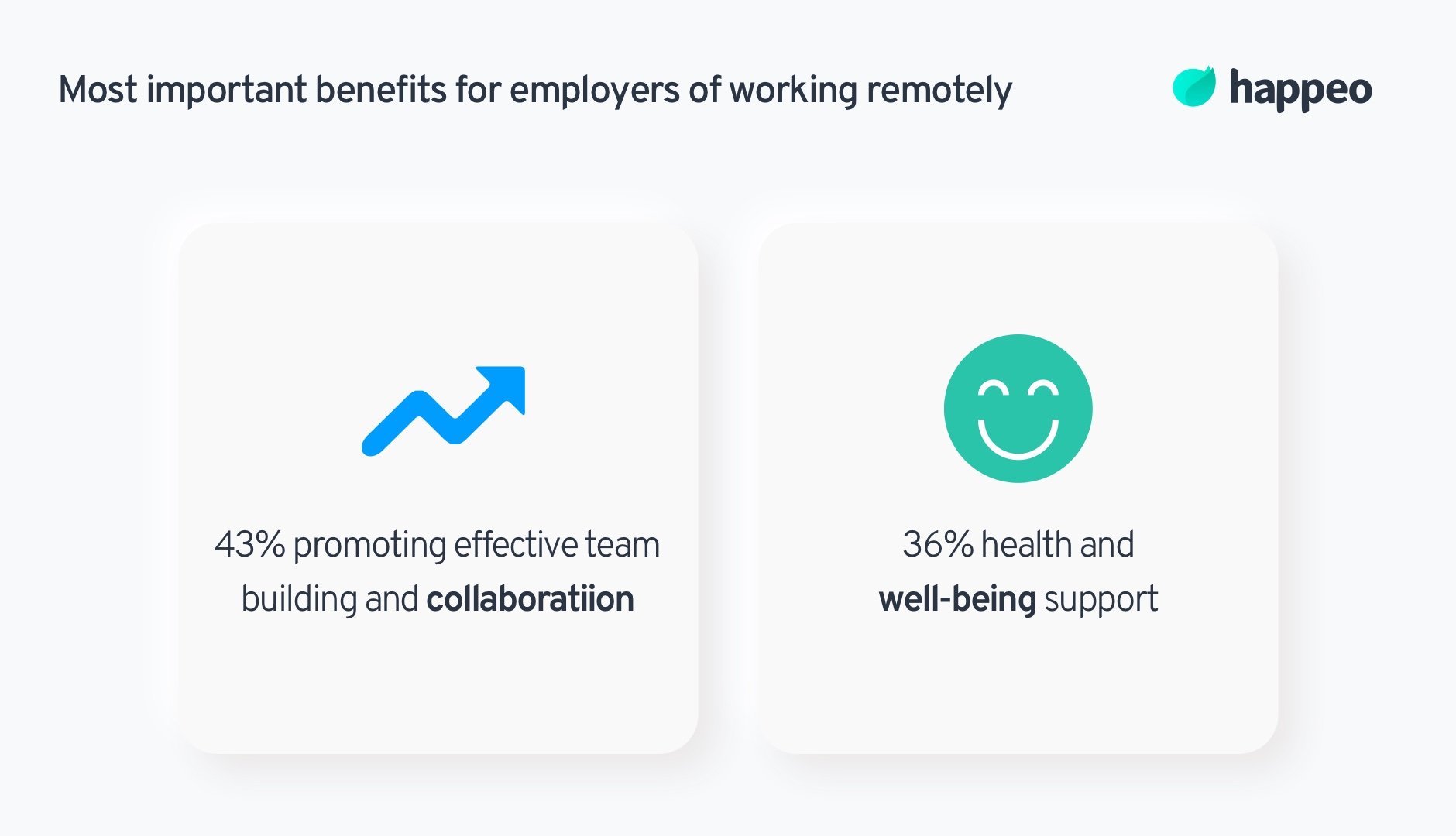
- Around 75% of executives state that their business functions compete instead of collaborating on their digital projects. As a result, 64% are not seeing a boost in their revenue growth from their digital investments.
- 75% of employees think good teamwork and leadership skills are crucial to the success of their projects. 39% of the surveyed workers believe that their companies and teams can collaborate better.
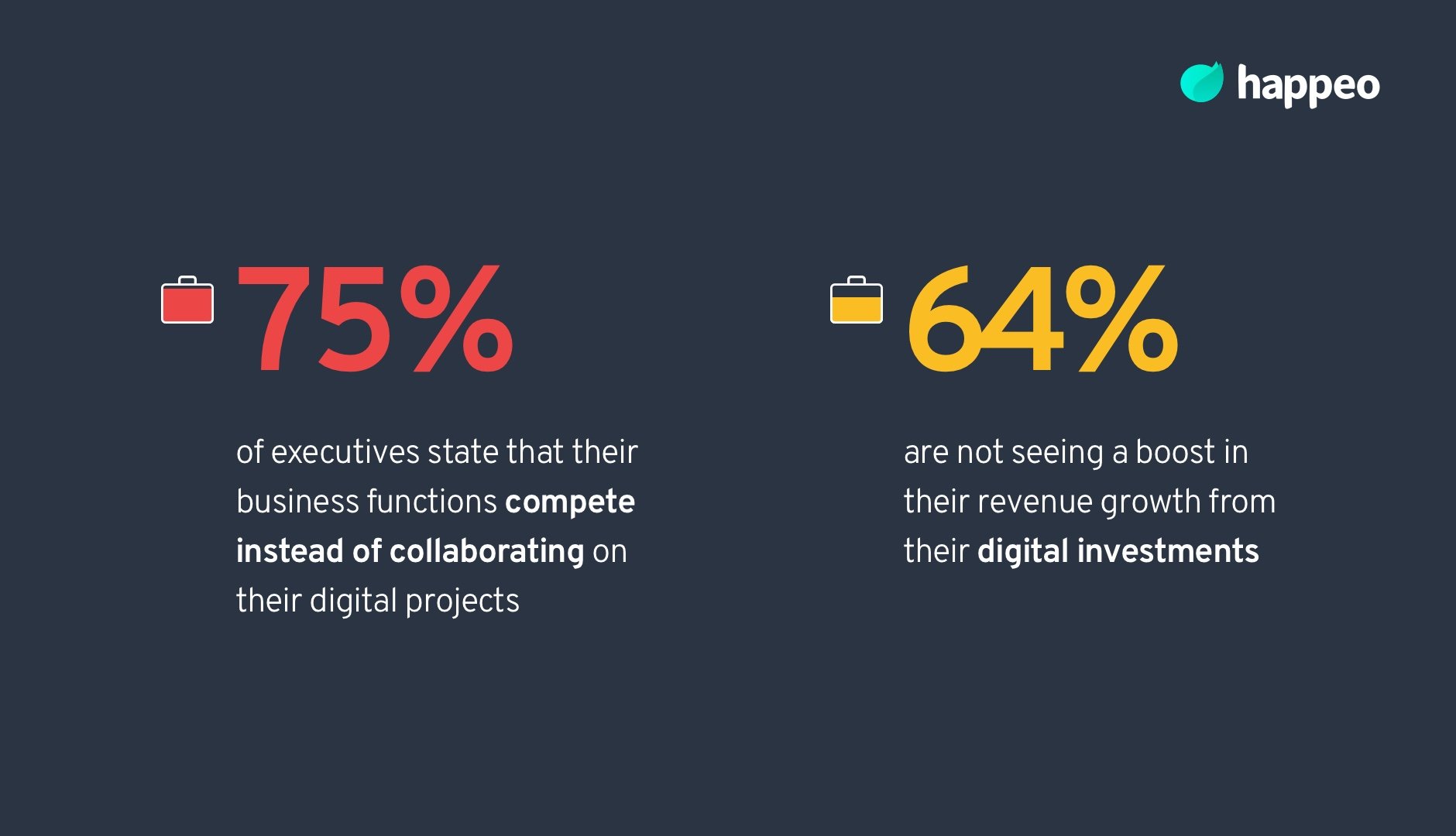
What is collaboration?
In broad terms, collaborations means working with someone to produce something. Effective collaboration allows different individuals to pool their talent and skill to achieve a common purpose or benefit. When applied to business, team collaboration involves facilitating the shared knowledge, learning, and resources to support increased productivity and efficiency teams and help organizations tap into the talents of their employees. Implementing an intranet brings your organization together in an efficient and organized way, no matter where your workforce is.
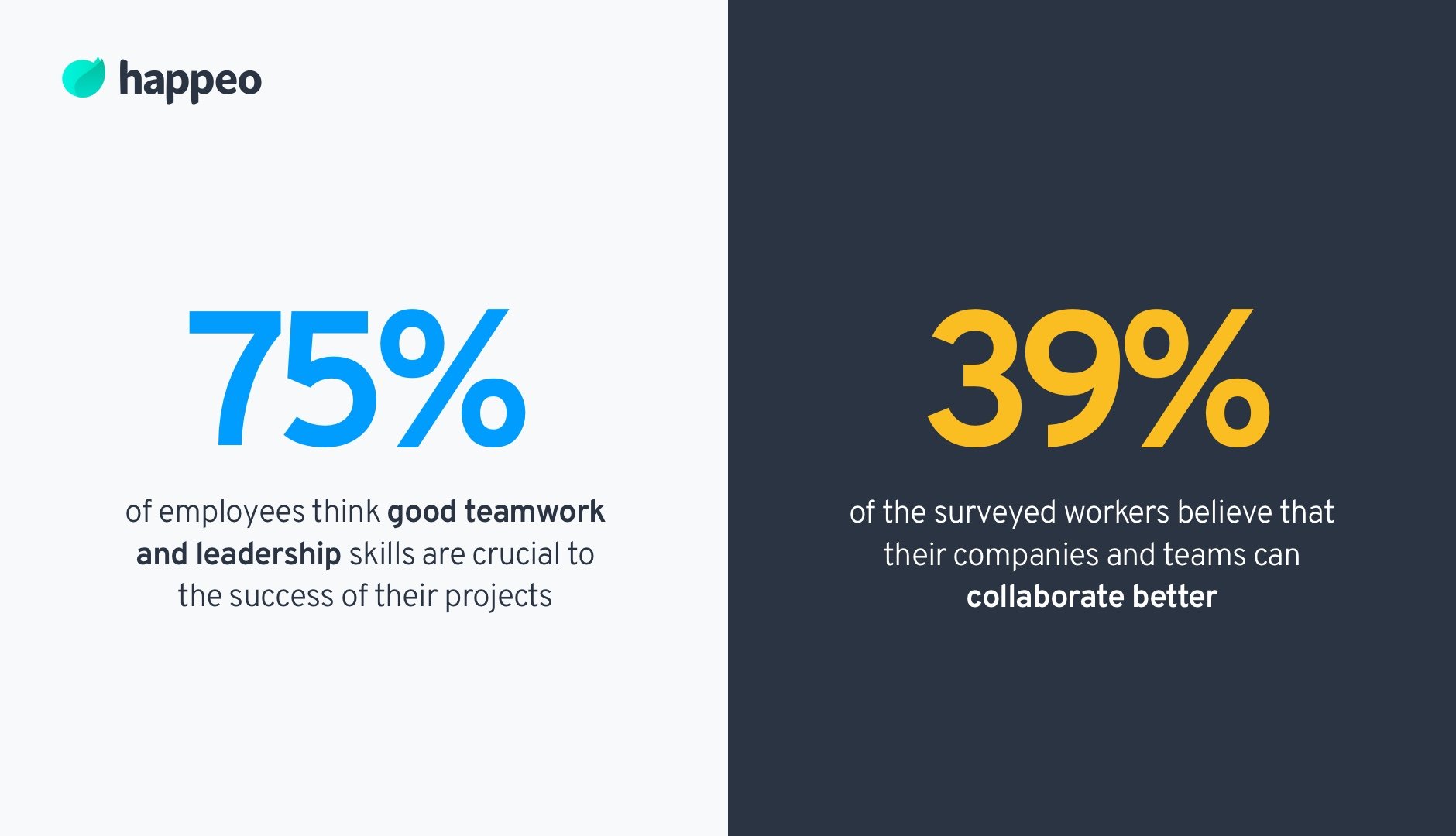
How is collaboration different from teamwork?
Teamwork and collaboration in the workplace go hand-in-hand. They both involve individuals coming together to combine their skills and achieve a certain outcome. However, there are some subtle differences that separate teams that work together and teams that collaborate.
How teamwork and collaboration differ?
Teamwork involves individuals working together in their respective roles in order to achieve the same outcome under the direction of a leader. A good example of this is a football team. Each player has a designated role and together they work towards goals under the direction of a coach.
Teamwork requires direction towards a specific goal, however with a good leader this can be achieved without the group forming intrapersonal relationships or sharing values. At the end of the day, it's a group of people with similar skills coming after to achieve a common goal.
Collaboration involves the team not just working together, but thinking together. Team members have equal ownership of the goal, in effect taking a leadership role in their area of expertise. Each member brings something different to the table, boosting the project with a diverse set of skills. Together, the group works to achieve the end product. Collaboration in the workplace is what makes teamwork successful.
Want to improve collaboration?
Get an intranet
What does effective collaboration look like?
Employee collaboration is characterized by the breakdown of silos and promotion of support and engagement within teams. Employees are encouraged to share knowledge and learning opportunities to overcome challenges and achieve goals.
Good collaboration is often mistaken as simply good communication. While the two go hand-in-hand, successful collaboration involves much more. The principle behind effective collaboration is to ensure that work is evenly distributed and team members are equipped to support each other.
Key elements of effective collaboration
Employee engagement is a key aspect in collaborative teams. Engaged employees are more likely to interact with team members and drive innovation. In a study by Gallup, highly engaged teams report 21% greater profitability. Individuals who feel that their voice is heard are also more likely to feel empowered and perform their best work. Starting off with engaged employees makes it easy to transition into collaborative teams.
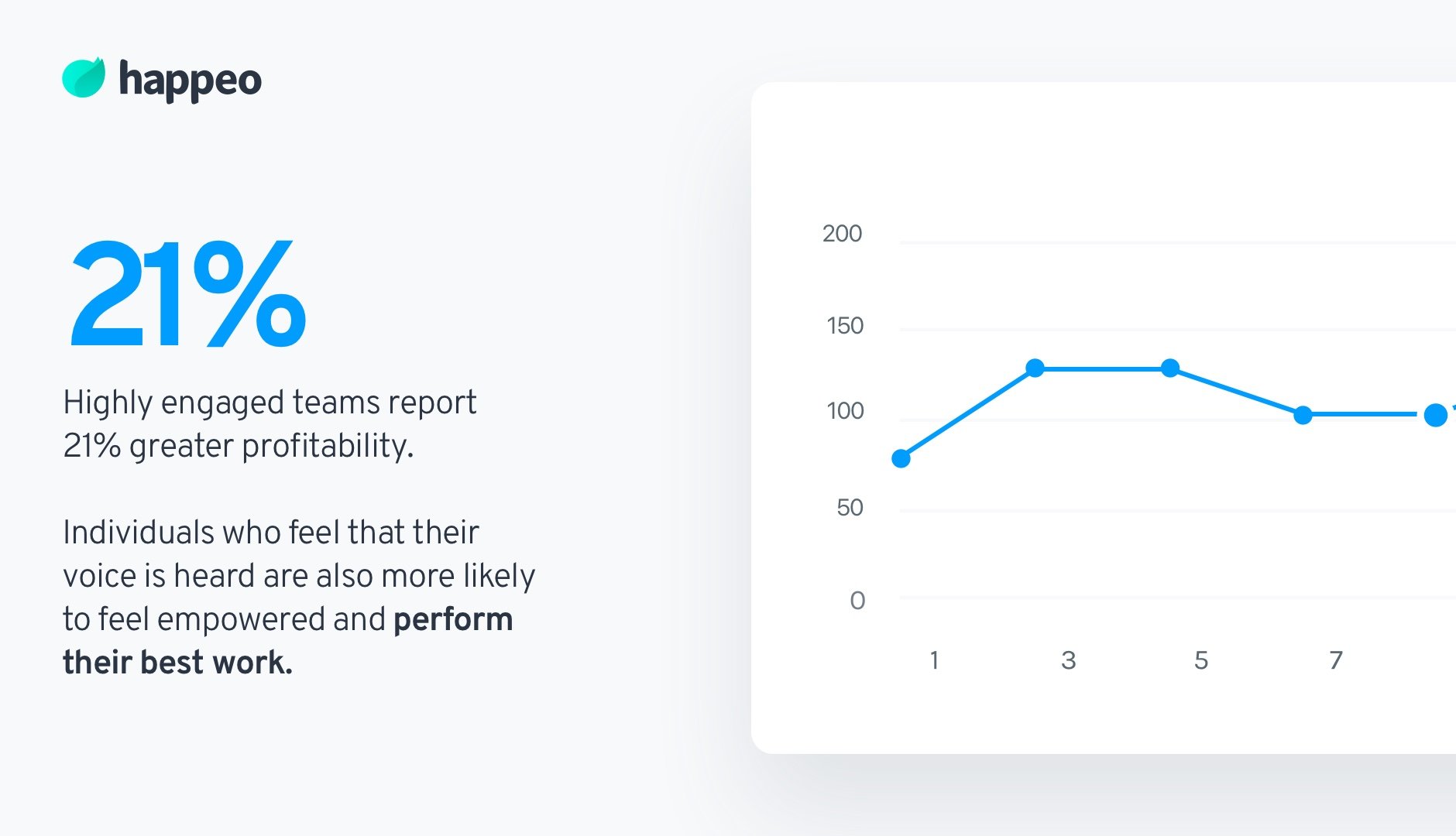
There are some telltale markers of collaborative practices within a team:
- Clear goals
Everyone on the team understands what they are working towards and the role they play in getting there. You can ask any one person what their team's top goal is and they can answer you without skipping a beat. Clear goal setting makes it easier for teams to prioritize work and encourages transparency in the workflow.
- Shared knowledge
Teams that collaborate share knowledge and learning experiences to make the process more efficient. The advantage of working in multidisciplinary teams is that everyone brings a unique skill set helping the team tackle challenges from all perspectives. Project knowledge is centralized allowing for feedback and new insights.
- Resolving conflict
Conflict in your teams can actually be a good thing. People from different specialities coming together to work on one project are bound to face discourse. The important thing is to resolve these issues quickly in a way that suits your company culture and while keeping the common goal in mind. Successful conflict resolution can strengthen bongs within a team and help them work more efficiently together.
- Room for personal growth
While teams are an important aspect, organizations are composed of individuals. Team members are motivated when they are able to align their work with their personal aspirations. It's important to understand the individual goals and provide opportunities and resources to further development.
- Shared success and rewards
A culture centred around rewarding teams for hard work makes for a more motivating workplace. Having a great incentive in place makes teams work harder towards achieving goals. It's important to remember that in a collaborative culture, everyone is working together and should therefore be recognized for their contribution to the success.
- Accountability in roles
Everyone know what they are responsible for and knows who to go to for each task. Accountability doesn't mean finger pointing, but instead a clear delineation of roles helps team members understand what role they play.
- Trust in each others
Trust and empathy are clear markers of a collaborative team. This helps the team take turns supporting each other and and finding common ground when differences arise. Trust can take a long time to cultivate, but it is the most powerful force driving your collaborative teams.
What is an intranet?
Watch a short video
Why is collaboration important?
The goal of collaboration is to maximize the success and efficiency of your teams. Without collaboration, a group of individuals is limited in their impact. But by working together, teams can leverage one another's skills and knowledge to achieve great things.
Why do we need collaboration?
No matter what business you're in, your success depends on the ability of your team members to work together. Many companies face issues that require quick and agile solutions. These solutions are often implemented by team members, meaning their speed and efficiency directly impacts your ability to face challenges.
A disjointed workforce can often result in confusion, mistakes, and lost time. The importance of collaboration lies in its ability to increase your team's efficiency. By sharing knowledge and learning opportunities, teams can minimize time wasted and focus on business goals.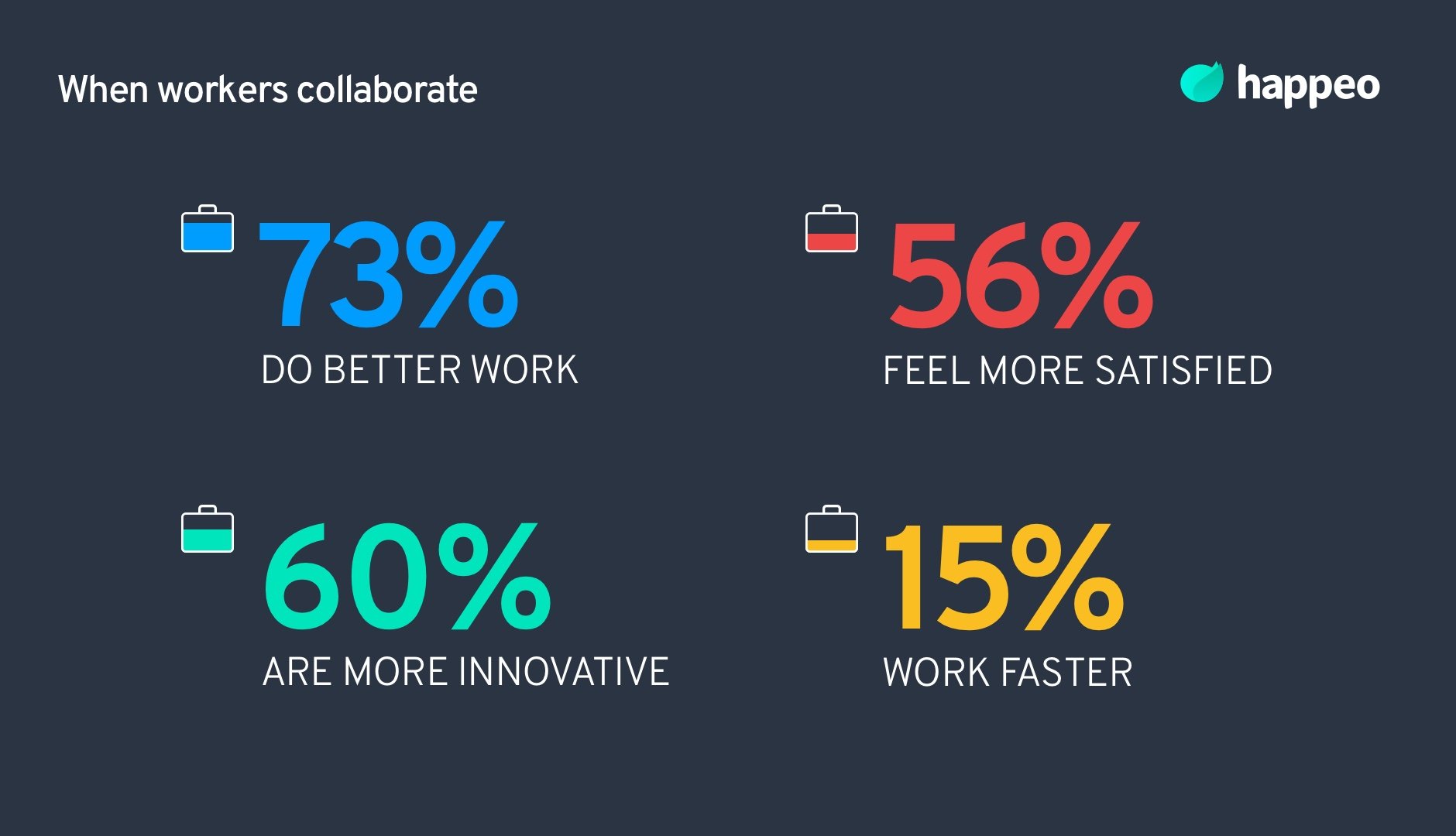
Why is collaboration important in business?
Collaboration inspires a better working culture, resulting in a more motivated and engaged workforce. In fact, when workers collaborate, 73% do better work, 60% are more innovative, 56% feel more satisfied, and 15% work faster. When individuals connect with their work and feel valued, they are more likely to stick around. According to The Economist, 33% of all employees say that better team collaboration makes them more loyal.
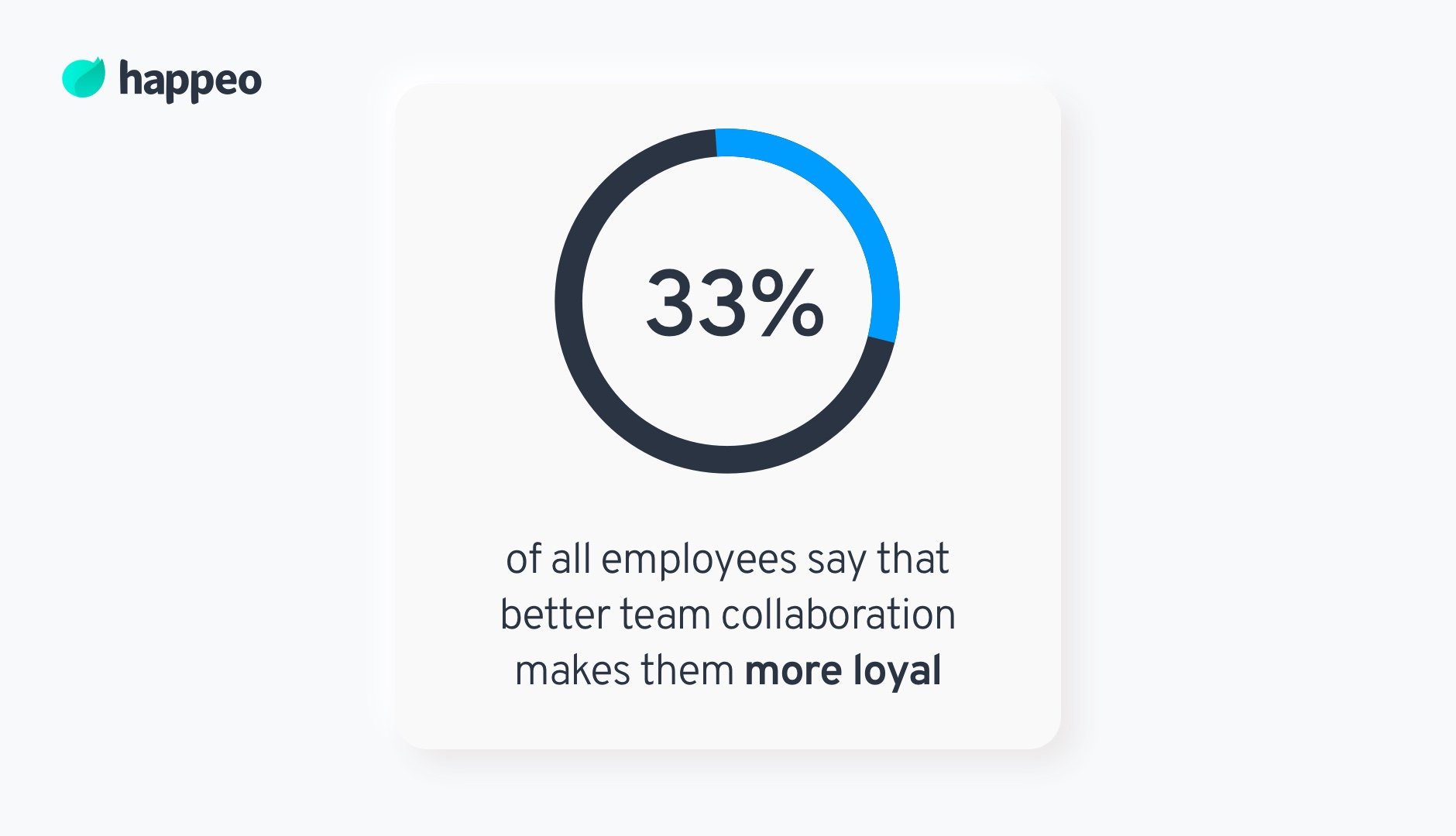
When teams collaborate:
- Mistakes are only made once
Collaboration allows teams the opportunity to learn from each other’s successes and failures. This gives you an organizational foundation of learning, meaning the same mistakes are less likely to be made twice.
- Solutions are reached faster
Bringing individuals together from varied backgrounds and skill sets will enhance your team’s approach to solving problems.
- Teams are more productive
According to Forrester, collaborations can drive 10% productivity improvements. Efficient processes, clear communication and playing to individual strengths helps direct and motivate teams towards success.
Well rounded, collaborative teams make for a better organization as a whole. By pooling the perspectives and knowledge of your teams, your business will benefit.
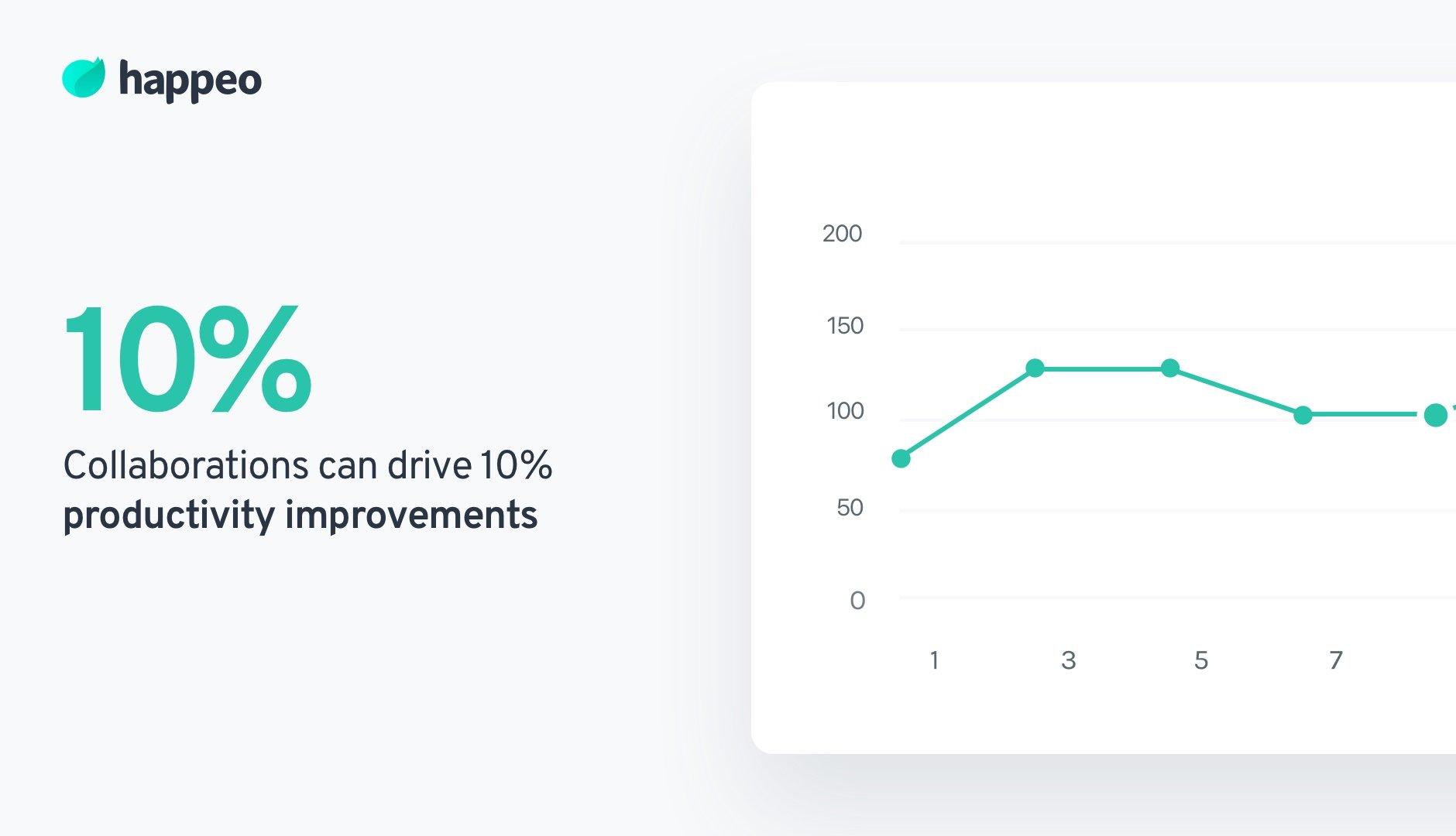
Why collaboration fails
If collaboration is such a clear advantage, why aren’t more organizations doing it? The fact is collaboration is about more than putting people together to work on a project. It’s about creating a culture that fosters collaboration as well as provides clear direction. It’s also about recognizing different collaboration styles and figuring out what types of collaboration work for you.
Challenges in getting team collaboration right:
- Goals need to be clear
A cornerstone of collaboration is the collective effort towards one goal. Concrete goals empower team members to contribute while unclear goals leave individuals questioning their actions and unable to prioritize tasks effectively.
- Trust needs to be in place
Having a team that fully trusts each other is a powerful thing but can take years to cultivate. However, some degree of trust is essential for effective teams. Without trust, there is a lack of understanding and respect for other members’ contributions. This can impede workflow and stifle new ideas.
- Recognition should happen often
When teams come together, individuals can often feel that their individual expertise and contribution goes unnoticed and unappreciated. Recognizing team members for their work and showcasing their talents to the organization can help provide individual motivation.
- Communication needs to be open and frequent
For teams to come together to share ideas, communication is vital. When information and knowledge sharing is intermittent, it’s easy to slip into silos and further divide your organization. Team members should always be aware of what is expected of them and feel open to share ideas to improve processes.
It's important to consider the unique needs of your workforce when looking at your collaboration. Different company cultures and teams will respond to different collaboration styles. The type of collaboration you choose should be what comes naturally and makes the most sense for your business.
Benefits of collaboration in the workplace
Collaboration is an invaluable tool in your workplace and will benefit you in many ways. According to Emergenetics, collaboration is identified as one of the top four most important skills to contributing to a worker's prospective success. Great business leaders know that group collaboration can be a powerhouse for your organization.

Collaboration is something that’s highly valued by employees as well. A survey conducted by Fierce Inc. found that 86% of employees blame lack of collaboration or ineffective communication for workplace failures. In addition, more than 97 % of those surveyed believe the lack of alignment within a team directly impacts the outcome of any given task or project.
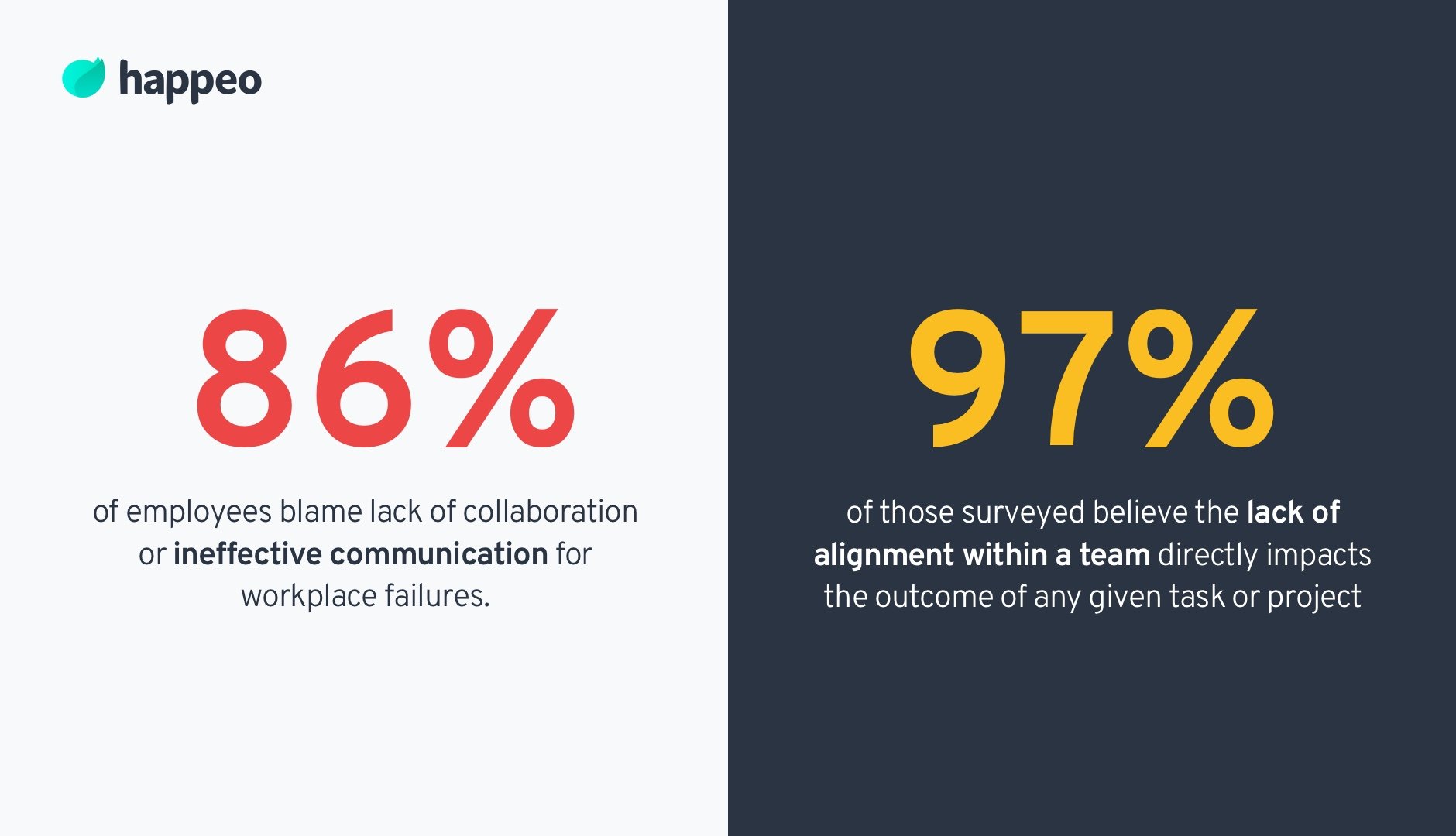
It’s clear that group collaboration has a huge impact on the work environment. Implementing the right tools and opening up communication can open the door to help your team work more efficiently. But what does collaboration do exactly?
- Employees can save 5-10% of their time by implementing collaboration platforms.
- Employees who act collaboratively stick at their tasks 64% longer than their solitary peers, whilst also reporting higher engagement levels, lower fatigue levels and higher success rates.
- Businesses with effective communication are 50% more likely to have lower employee turnover.
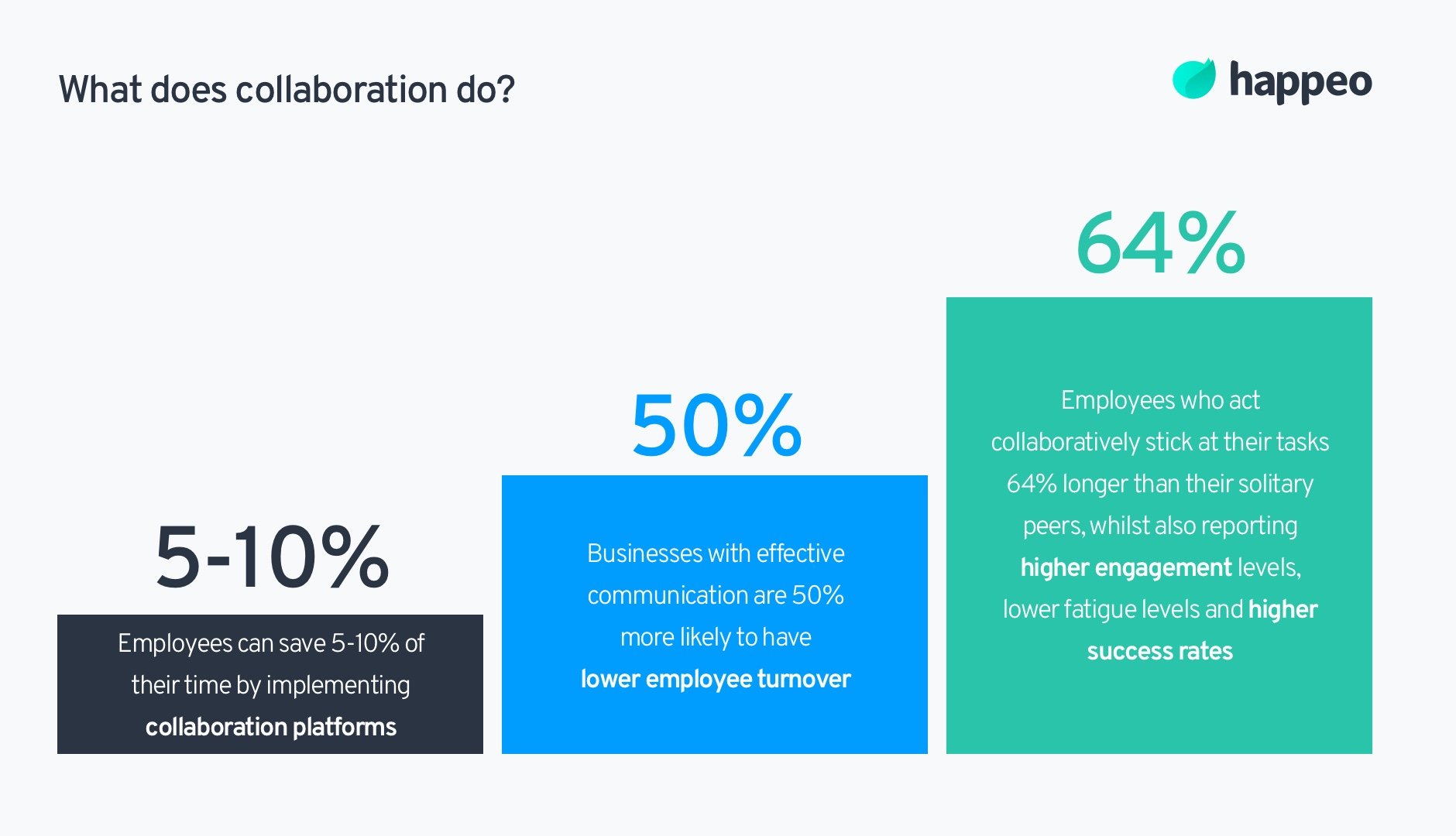
How does online collaboration work?
Online collaboration has been much talked about in the past year. It refers to the digital tools and platforms that teams used to work together digitally. They usually are easy to use and implement and allow your teams to share information both in and out of the workplace.
Digital communication has long been a source of freedom and more efficient practices in teams. Online collaboration tools allow employees to connect with each other no matter where they are and collaborate on shared projects with greater accessibility. These digital workspaces have allowed businesses to become more flexible in the way they work.
How business is evolving after COVID-19?
So why is the digital workplace important, and why is it crucial to adopt intranet 2.0?
Team collaboration has taken on a whole new meaning after 2020. As the pandemic emptied offices, employees around the world found themselves logging in from home – some for the first time. An e-survey conducted by Eurofound found that in July 2020 nearly half of the respondents classified as 'employee' (48%) worked at home at least some of the time during the COVID-pandemic. Of these, over a third (34%) reported working exclusively from home. Additionally, of those working from home during the crisis, 54% of employees reported having worked from home previously while 46% were new teleworkers.
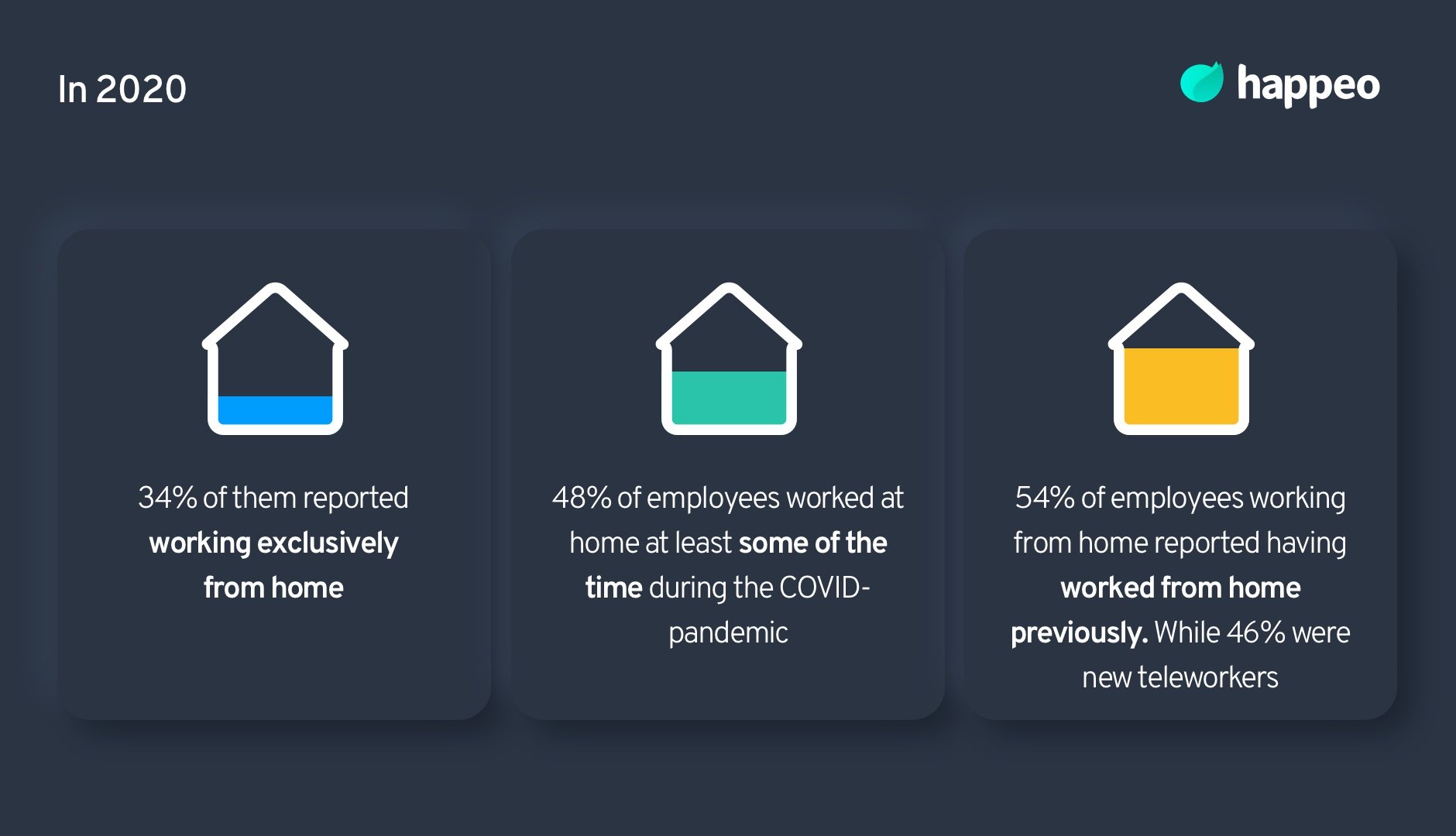
This abrupt shift to remote working has demanded a more agile approach to business collaboration. While teamwork has always been a critical aspect, successful collaboration in the workplace has become more effective, flexible, and dynamic than ever before. Instead of board rooms and post-it notes, 83% of professionals are now turning to technology to connect with their teams. Where email once reigned supreme, virtual collaboration in the workplace has seen the rise of intra-company communication tools like Slack and Microsoft Teams. Video chat has become the main mode of communication for both work and play, providing a place for teams to gather and connect with one another.
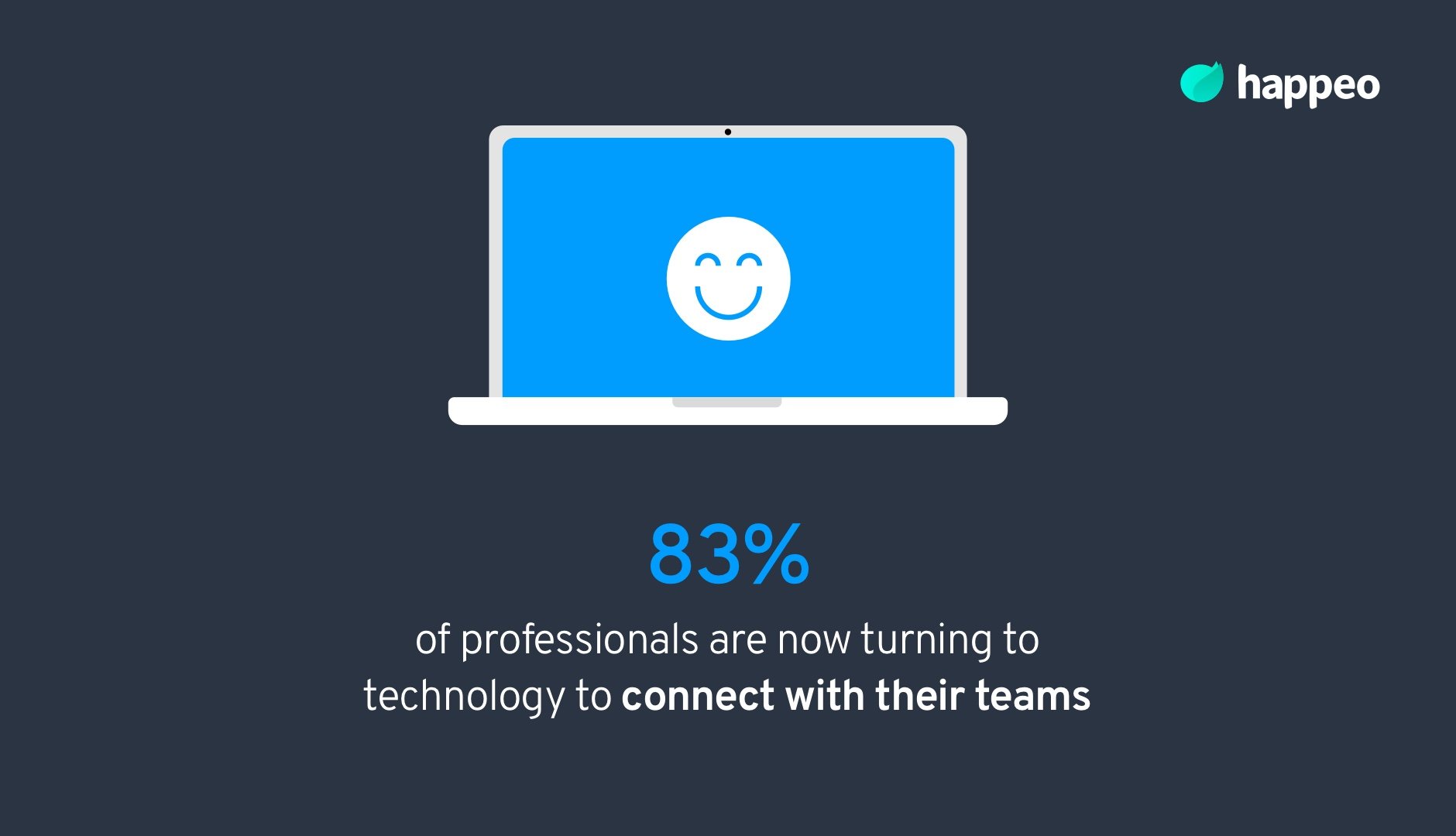
Remote working is here to stay, at least to some degree. Even as COVID begins to lift, employees find the flexibility and ease of remote more suitable to work life balance. Looking at trends going into a post-pandemic world, Forbes found that nearly 90% of those polled think a digital workplace will coexist with a physical workspace once COVID-19 is finally over, and almost 80% of respondents expect to increase their remote work/digital workspace in a post-COVID world. Business leaders agree with the shift, with CEOs estimating an average of 36% of their workforce to remain working remotely into January 2022. This is up from 13% before the pandemic.
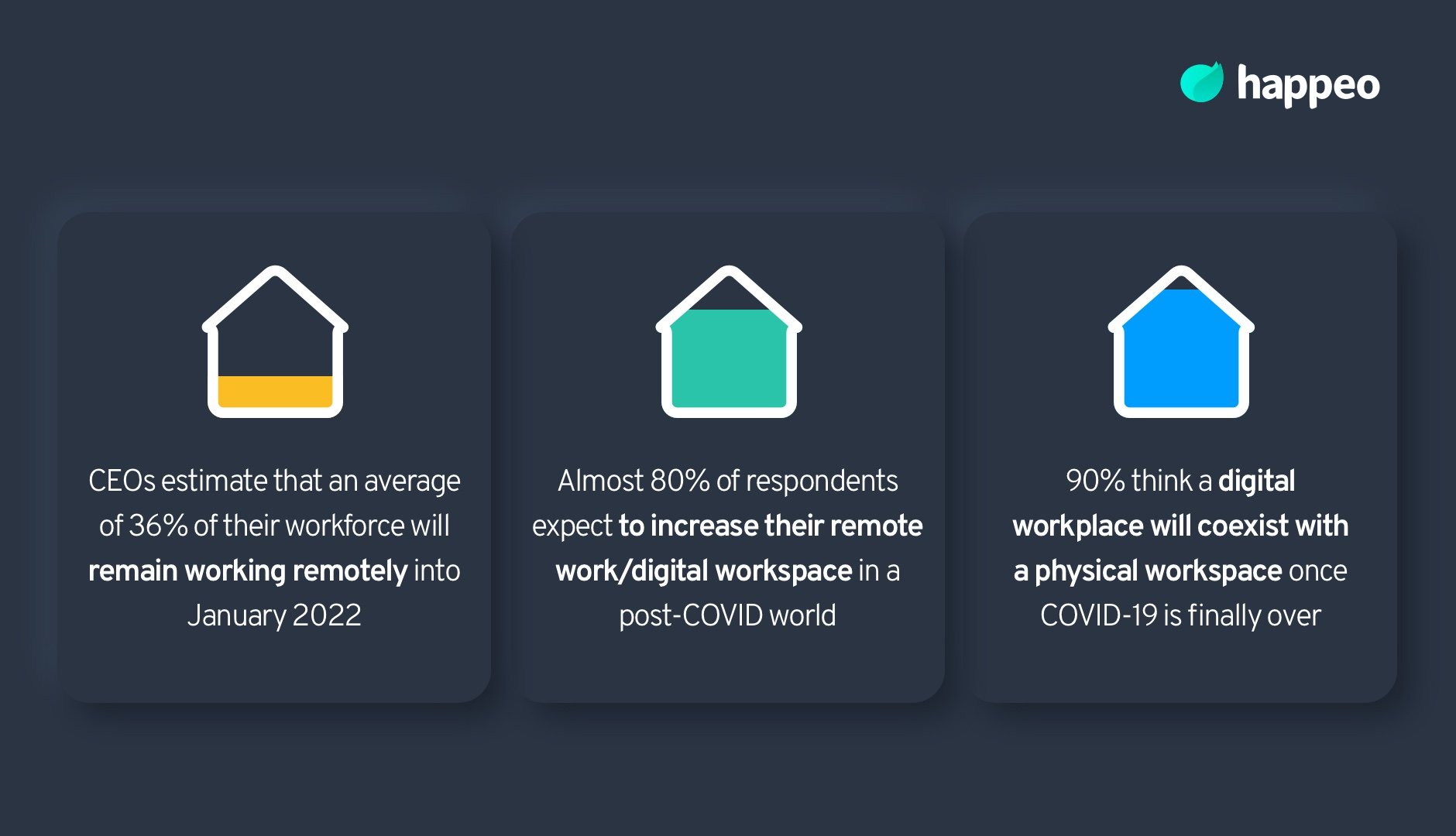
Successful examples of collaboration and teamwork in the last year have shown us that remote work requires the right tools. Managing remote teams demands a different approach to day-to-day communication and project management. In the midst of the COVID-19 outbreak and moving forward, 39% of the executives find that introducing digital collaboration platforms is the most important factor in making remote work sustainable. We will dive into some of these collaboration tools later in the article.
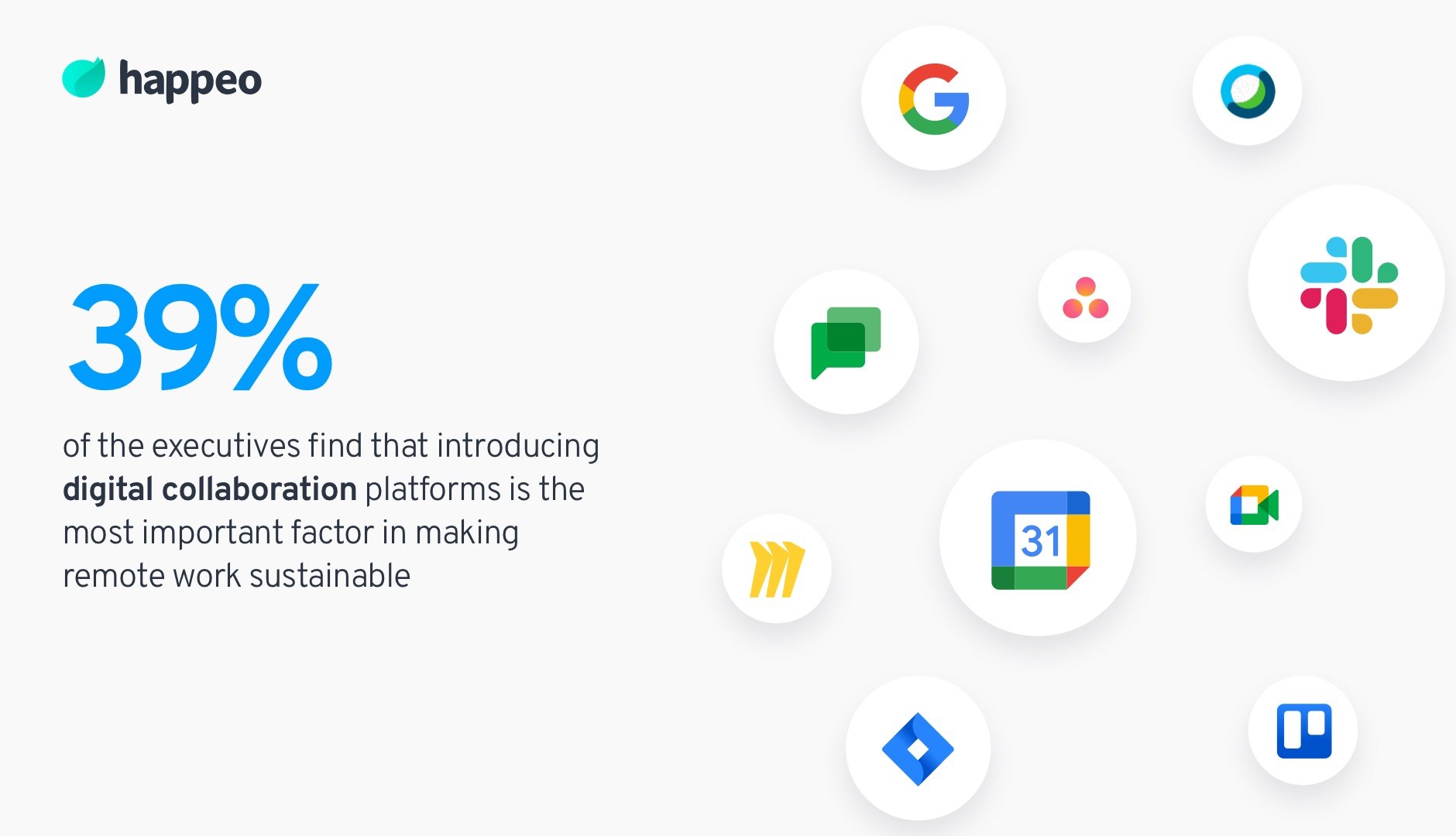
How to improve team collaboration: Strategies and best practices
When it comes to company collaboration, there is no one size fits all. Different teams will have different styles of collaboration and processes that work for them. Good team collaboration may differ in function, but the results will look the same; a more effective and productive workforce that works together to achieve business goals.
To build employee collaboration, there are certain building blocks that can help you lay the foundation for more effective teams.
5 strategies for effective collaboration
1. Communicate frequently
For people to work together effectively, communication is key. Whether it be in-person meetings or team video calls, teams that align frequently and talk often tend to have not only a better handle on their work but also deeper connections with their teammates. Internal Communication strategies can help engage your teams
2. Set clear goals
Clear goal setting should be a key part of your enterprise collaboration strategy. Even the most collaborative teams can’t be effective without a clear direction in mind. Setting measurable goals and communicating them frequently can help your teams come together to harness their problem-solving skills and avoid wasted time on confusion. Concrete goals can also work cross-functionally to improve collaboration between departments by creating a common cause for employees to rally behind.
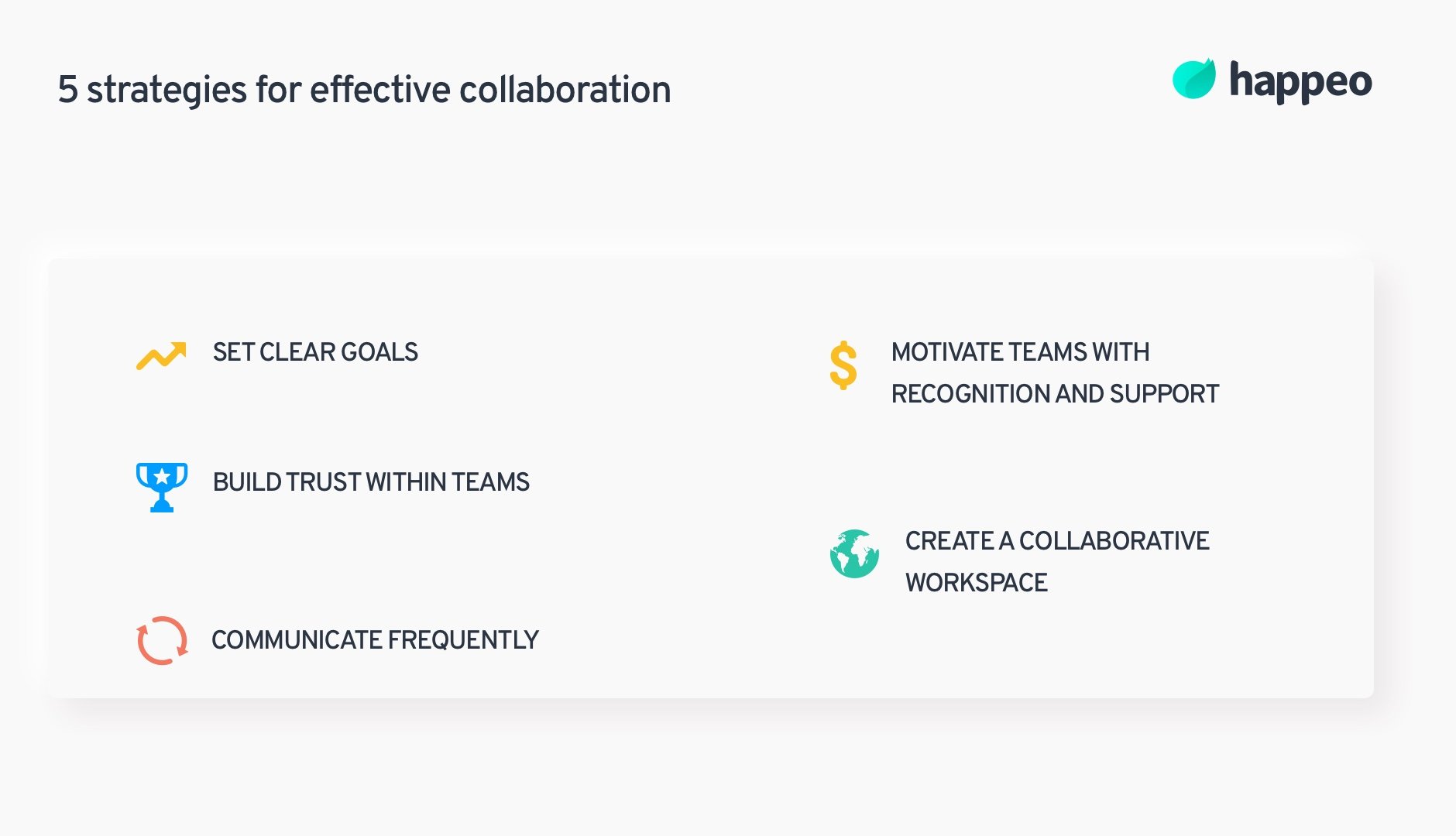
3. Create a collaborative workspace
In what ways do your teams communicate best? What tools could help them work together more seamlessly and efficiently? Utilizing digital tools can help facilitate more streamlined workflow, especially in a remote work setting. Employees are increasingly relying on technology to facilitate projects, receive input, and share ideas.
4. Motivate teams with recognition and support
The key to a productive team is motivation. Collaboration thrives when goals and communication are clear but suffers when people don’t feel supported. Motivate your teams by playing to individual strengths and recognizing teams for their contribution to company wins. This will help provide personal growth opportunities as well as a sense of departmental achievement.
5. Build trust within teams
To reach the highest level of collaboration, teams need to build trust in one another. When individuals feel that they can trust their teammates, they are more likely to ask questions and communicate openly. Trust is the secret ingredient to unlocking your teams’ potential to collaborate effectively.
Want to boost work productivity?
Get an intranet
How to develop collaboration skills?
There’s no question that investing into developing collaboration skills in the workplace is worthwhile. You will increase employee satisfaction and your teams will be more productive, and more likely to remain loyal. But where do you start when it comes to putting these ideas into action?
Luckily, developing these skills doesn’t require huge changes or a big budget. Encouraging teams to work together requires more of a shift in mindset, with a few adjustments to your practices.
Here are some simple steps on how to improve collaboration in your workplace:
- Create a culture of communication
According to a study conducted by Dynamic Signal, 52% of workers report increased stressed levels due to inefficient workplace communication. This type of issue is something that is usually rooted in company culture and needs to be addressed and solved by decision makers and the employees themselves. Encourage people to take part in conversations and contribute new ideas without the fear of rebuke.
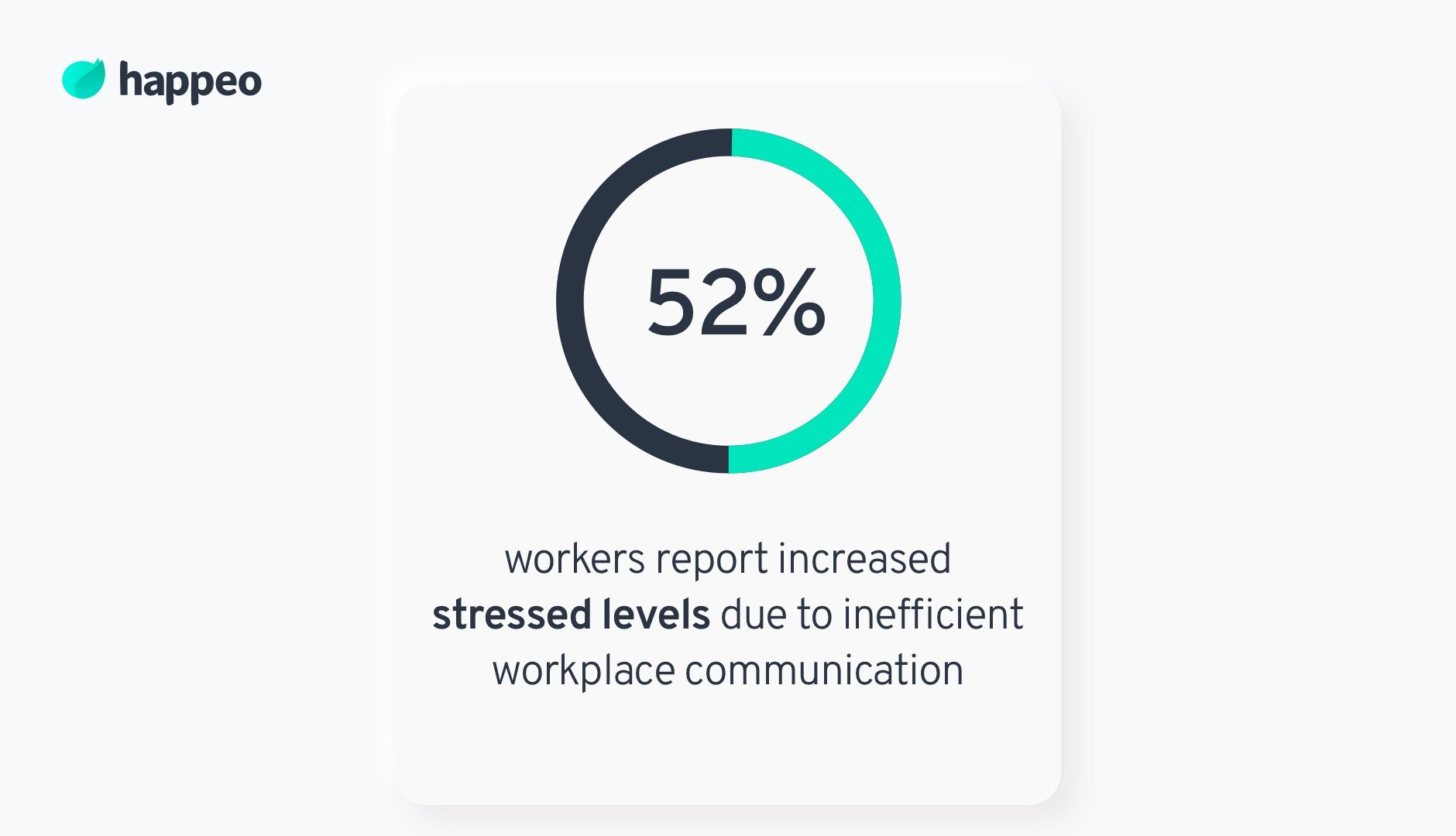
- Define roles and responsibilities
In order to be effective, people need to have a clear idea of their job description and role in the company. As obvious as it sounds, confusion over who is responsible for what tasks and deliverables can become a source of tension if not clearly defined. Ensure that employees are aware of their job description and only take on outside responsibilities when they feel that they can handle it.
- Treat failures as feedback
You are bound to come up against roadblocks and challenges in your team. Mistakes are bound to happen and can dampen your team’s collaborative spirit if they are treated harshly. Failures can become huge learning opportunities for your teams if you take the time to understand where things went wrong and how the process could be improved
- Support teams with collaboration tools and software
Provide your teams with the right tools that support their collaboration style and promote communication. Support them with role specific software that helps them automate menial tasks and focus on more important aspects. Reducing the amount of recurring admin tasks employees have to complete can help motivate them by giving them time to work on things that really matter.
- Provide learning opportunities
Give employees the change to move forward in their careers. Offer a stipend for teams to invest in furthering their knowledge in an area they want to learn. Investing in your employees will reflect in the motivation and drive in your teams.
How to improve collaboration
Improving your collaboration is a constant process. As your teams grow and change, so will their needs. Once you’ve laid a solid foundation of collaborative practices, implement practices that will foster feedback and further connection.
Below are some steps to help improve internal collaboration:
1. Check in with teams
Employee feedback is crucial to finetuning your business collaboration. However, if you don’t regularly check in with teams, you may miss opportunities to help them work more effectively. Seeking input from teams also makes them feel heard. A study from Salesforce found that employees who feel that their feedback is valued are 4.6 times more likely to be empowered to deliver the desired results.
2. Celebrate wins
Acknowledging hard work is the best way to build team morale. After all, who doesn’t like celebrating a job well done? Start small by congratulating individuals or groups when they hit their targets. Take pride in your team’s work and share it with the company. Employees will feel acknowledged and rewarded for their efforts.
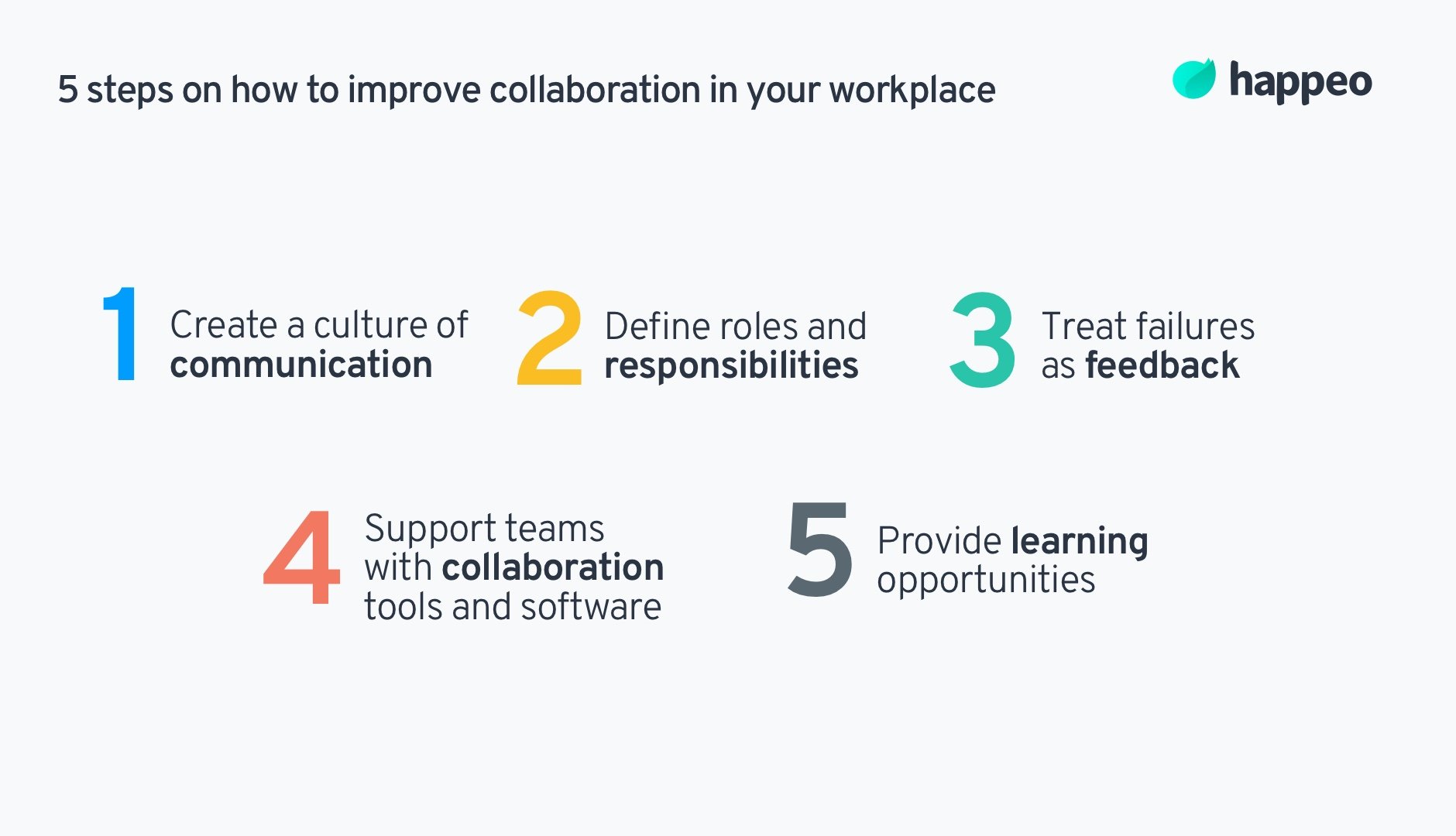
3. Get together in person when possible
Whether your teams are in-person, fully remote, or somewhere in between – one on one interactions are the surest ways to build connections. Investing time into team building activities outside of daily work can help teams build trust in one another and work together more effectively.
4. Encourage team members to socialize
Personal connections foster a deeper sense of purpose and drive for teams. When colleagues consider each other friends, communication can open up and ideas can flow freely. Support is more freely given, making teams more agile and responsive. Allow time for social coffee breaks during the day or encourage a weekly happy hour.
5. Play to people’s strengths
People like doing what they’re good at. Notice individual and team strengths and delegate accordingly. Acknowledge when people do a good job.
6. Work towards shared goals
Cross team collaboration requires effort towards a unifying goal. By communicating shared objectives and implementing metrics that track your progress towards achieving them, teams from different departments can come together more effectively.
Evaluate collaboration in your team
In order to improve, you must have some way to measure collaboration in teams. Measurements can include everything from feedback to metrics and must become the base on which you make improvements.
Evaluating collaboration in teams can be as simple as collecting their feedback. Figure out what’s going on. Is there a lack of trust or chemistry? Are teams competing instead of working together to create value? Or perhaps there is a problem with processes and communication? Whatever the problem is, it’s important to understand where teams are struggling before you can begin to improve. Collect the opinions and feedback from team members and observe them in action in order to build your strategy.
How to measure teamwork and collaboration
When evaluating teamwork and collaboration, there are a few key metrics that can help you gauge your progress:
- Are team members accountable for their tasks?
- Do they have a sense of service to their team?
- Is there a sense of continuous feedback and improvement?
- Do your employees share their ideas and listen to each other?
Answering these questions will help you assess how your teams view their team and their place in it. From there you can identify areas that can be clarified or improved to help your teams thrive.
How to measure collaboration goals
Teams must understand what success looks like in order to achieve it. Setting clear goals and helping employees understand the reasoning behind them can help you evaluate your team’s efficiency towards achieving these goals.
Do employees understand why they are doing what they are doing and how it contributes to the overall value of the company? Are there clear metrics that track their ability to not only be better at their job, but work more effectively within their teams (i.e. faster time to market, reduced costs)? Asking these questions frequently while communicating new goals or processes will help you measure the effect your teamwork has on your overall objectives.
Questions about intranets?
Talk to an expert
Collaboration ideas to implement yourself
Collaboration is something that you can practice. Even small steps towards building a more connected workplace can make a big difference in your team’s output. Here are some simple examples of collaboration ideas you can implement yourself:
1. Set the standard
As a manager, it’s important that you lead by example. Laying the groundwork for collaboration begins with providing your employees with a supportive environment.
2. Get your leaders involved
You've heard of the saying 'Lead by example', right? If the higher-ups are still sending emails instead of using intranet features, it will make intranet adoption that much harder. Get your leaders on board with the adoption process and the rest will follow.
3. Streamline your process
Collaboration becomes much easier when company processes are straightforward and standardized. If everyone does a task in the same way, there is less room for misinterpretation and confusion. Make sure that there is a standardized process for each of your basic operation procedures and ensure this information is available to all employees.
4. Collect feedback
The easiest way to start collaborating more effectively is to collect input from employees. This can help you identify ways in which your employees could be more efficient and supported in achieving business goals.
5. Make team building activities a part of your workplace collaboration
Teams that enjoy working together are more effective. Building personal relationships with one another can take some time but can be improved by incorporating team building activities into your workflow. Taking time to relax and connect outside of projects will help your team better understand each other and work together.
Which intranet to choose?
Download comparison guide
Examples of collaboration tools
What are collaboration tools?
In today’s business environment, teams cannot afford to be limited by where and when their work can take place. Workplace collaboration tools make digital teamwork possible. These digital platforms help teams share things like data, ideas, and project management tasks in one centralized, accessible place.
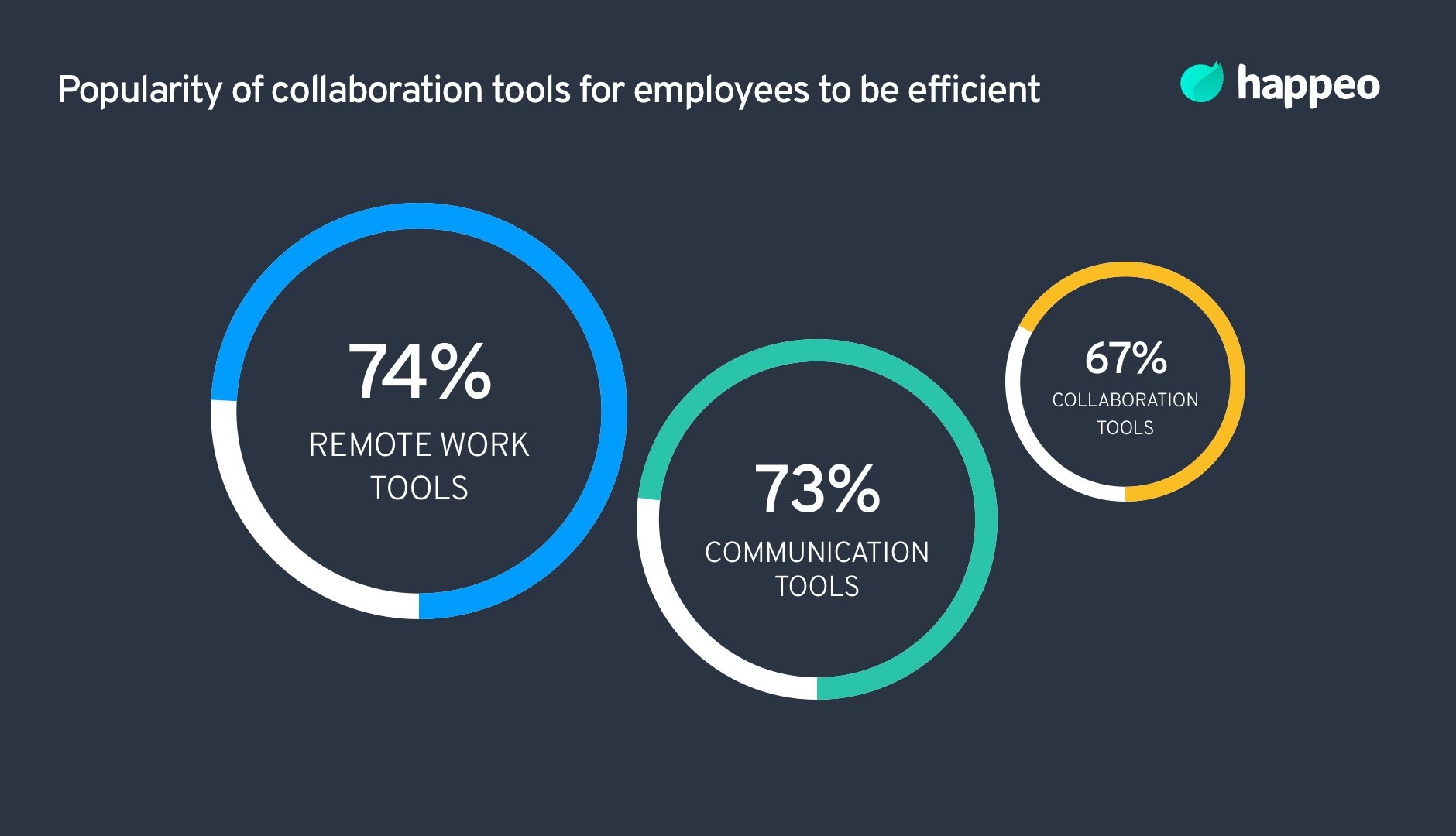
As organizations adjust to new ways of working, collaboration tools have become an integral part of successful team management. Communication tools (73%), remote work tools (74%), and collaboration tools (67%) are the most likely to be cited as important prerequisites for employees to be efficient. These platforms help teams gain visibility and accountability over project tasks and track their progress towards reaching their end goal. By providing a single, accessible source of truth, teams can minimize confusion and miscommunication. In fact, one study found that 85% of employees with access to collaborative management tools are more likely to perceive themselves as happy in the workplace.
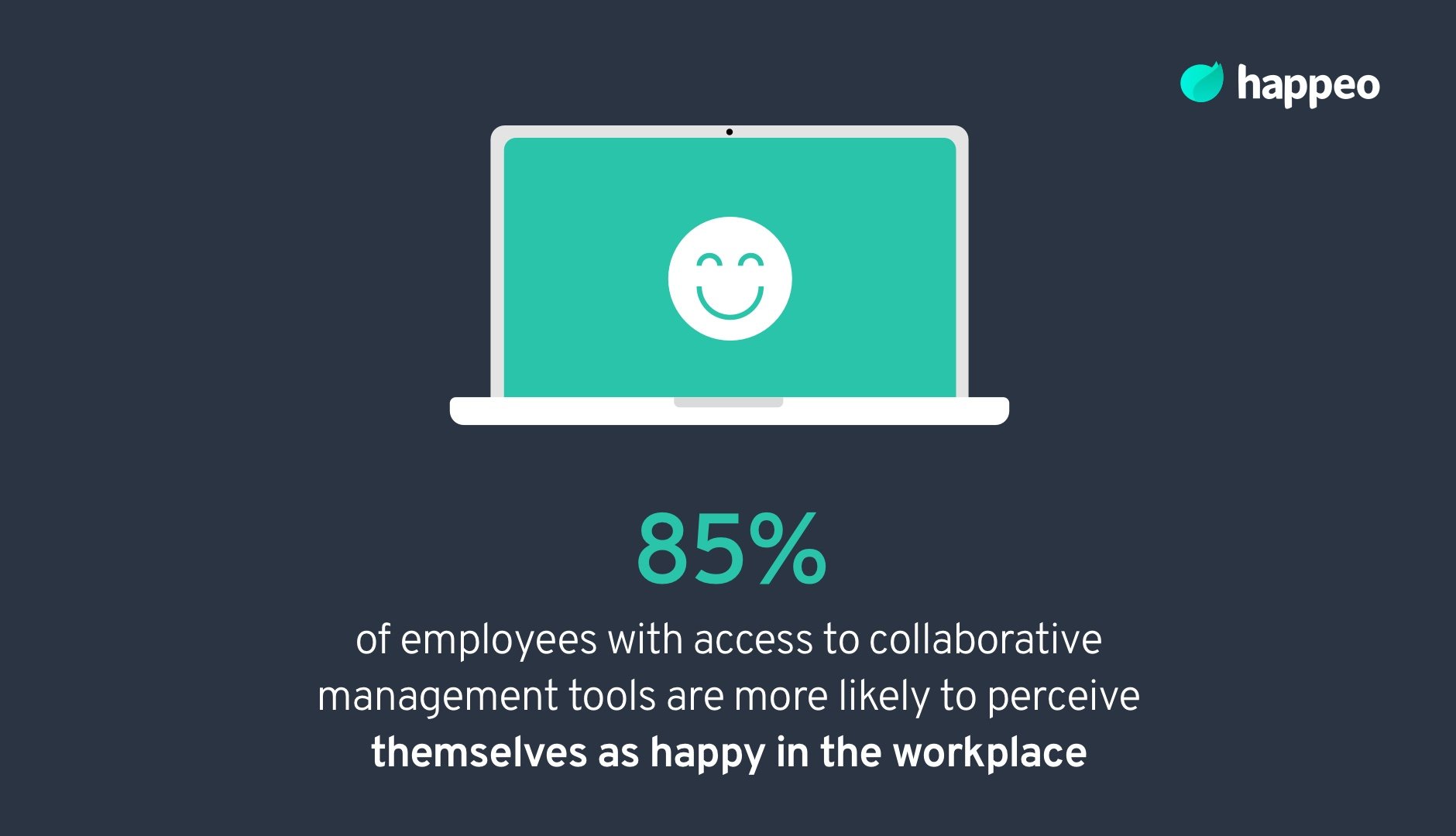
What is the best team collaboration software?
The goal of enterprise collaboration software is to facilitate people to get work done together. They are meant to take out the extra internal legwork when it comes to passing work along or following up on a task. The best team collaboration software should make work easier and allow employees to be more efficient and productive with their time. Instead of getting bogged down in follow-up emails or waiting on a response, team members are able to spend time on more important tasks.
Types of collaboration software
There are many types of internal collaboration tools that focus on different aspects of the workflow. When choosing the right tools for your team, it’s important to identify their needs and select a platform that will serve them best. Several platforms may be necessary to ensure all elements of the project are covered. Ease of use and integration should also be top of mind.
There are a few different types of collaboration tools. Different departments will likely have different tools that serve them best, depending on their function:
- Project management tool
- Communication tools
- Video conferencing tools
- Design tools
- Documentation tools
- Time tracking tools
- File sharing tools
Below are some of the top-rated enterprise collaboration platforms that can help you unlock the power of more productive teams. Our in-depth intranet software comparison can help you identify the similarities and differences between these platforms.
Top examples of collaboration tools:
Slack
This feature-packed messaging tool is a robust alternative to endless email chains. With integration into over 1,500 third party apps, it’s an easy way for teams to connect more productively.
Image source: G2
Google Workplace
Formerly known as G Suite, Google Workplace is an all-encompassing digital work environment where teams can collaborate with more efficiency, flexibility, and connection than ever before. Read our blog post How to use Google Workspace.
monday.com
One of the most used collaboration tools for team projects, monday.com allows you to track projects, deadlines, and team collaboration.

Image source: monday.com
Microsoft Teams
An all-in-one virtual work environment featuring everything from email and file sharing to video conferencing.
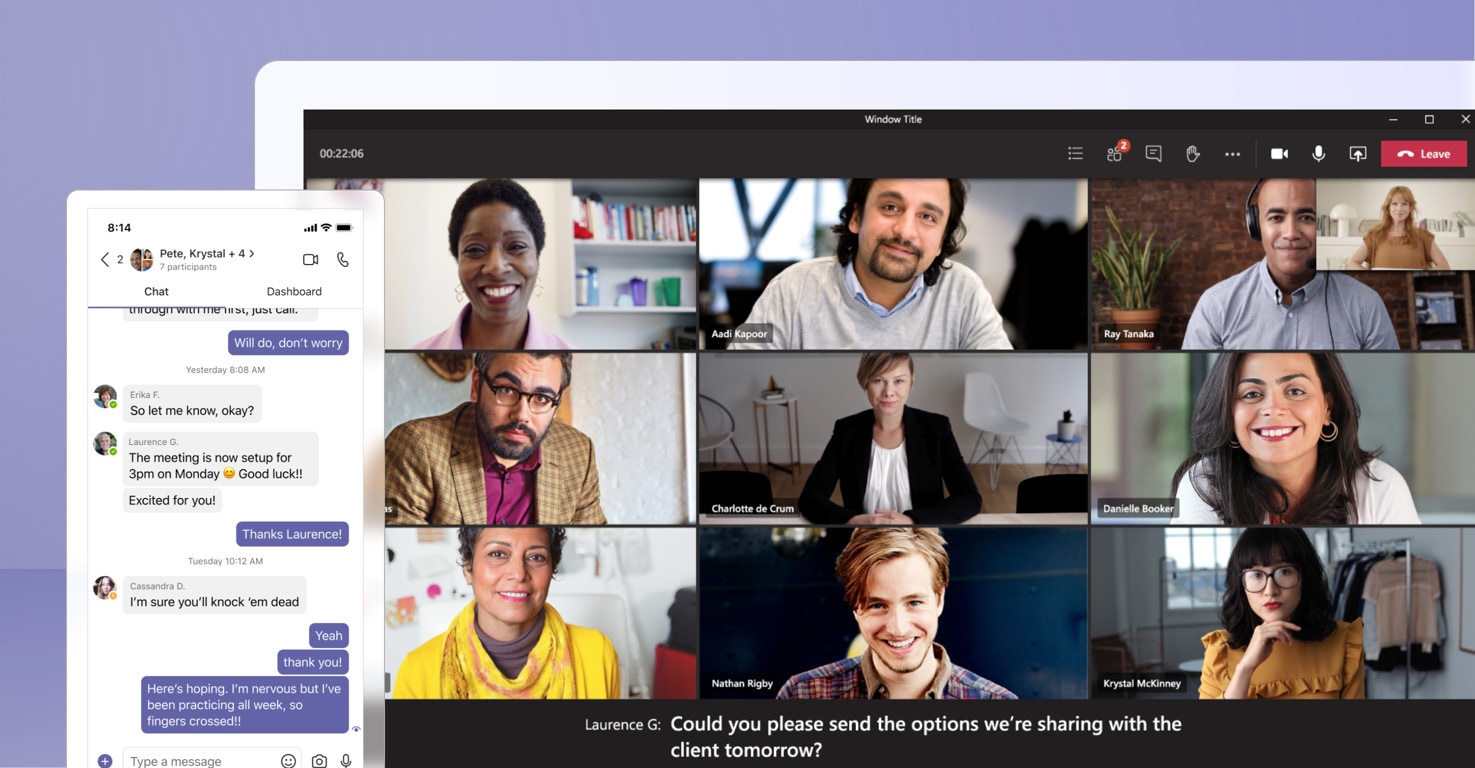
Image source: Microsoft Teams
Happeo
More than just an intranet, Happeo combines an intuitive interface with an array of collaborative features such as social networking, centralized knowledge base, and targeted news distribution that help your teams boost productivity and communication.
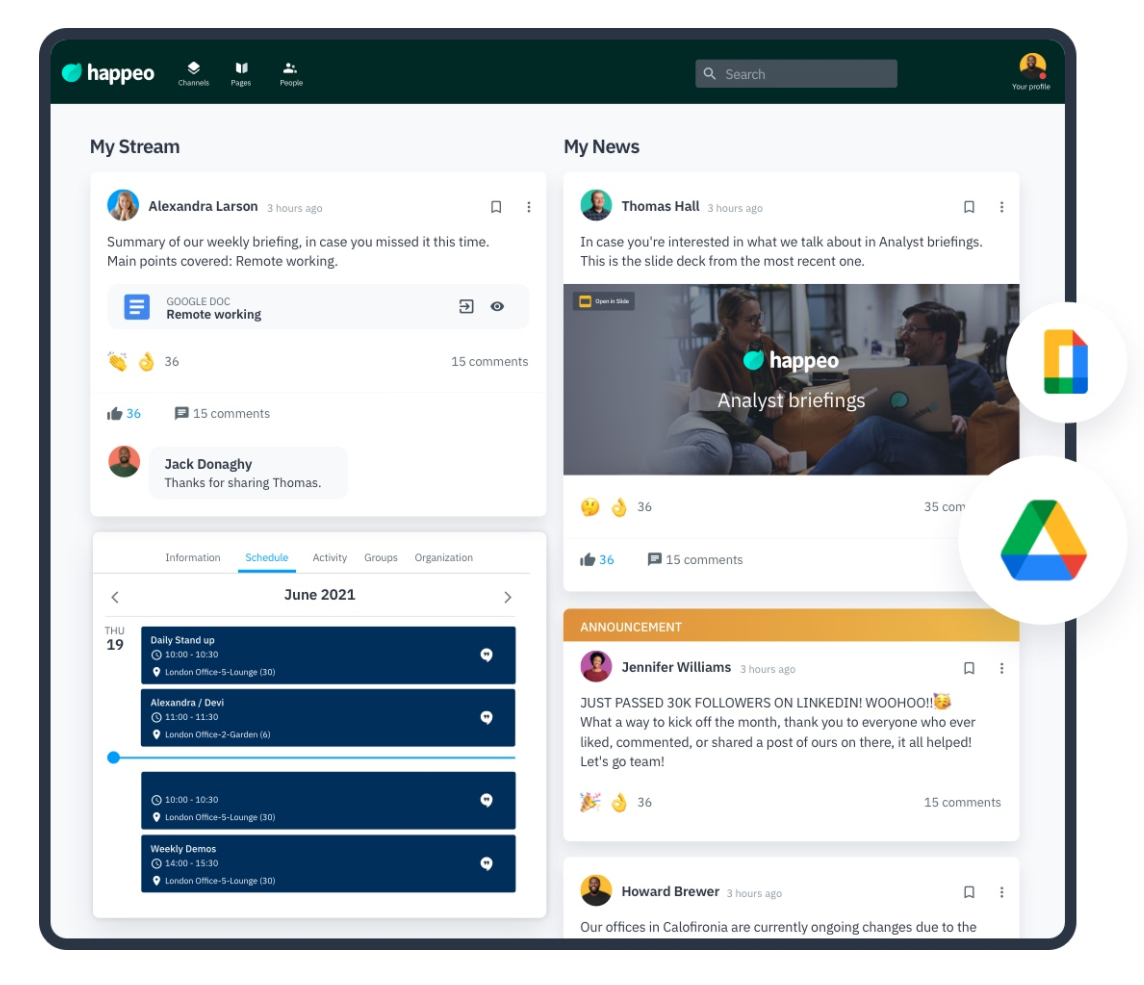
Conclusion
Team collaboration is the powerhouse that will drive efficient and effective operations. As the landscape continues to shift in a post-pandemic world, businesses must continue to motivate and connect their teams as well as provide them with the right tools to spark collaboration into the future.



